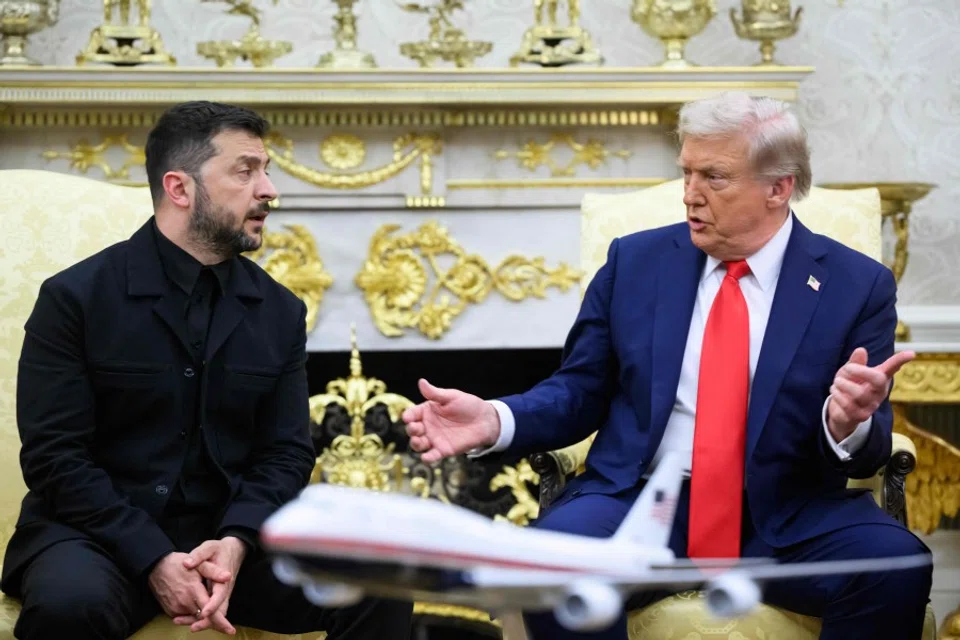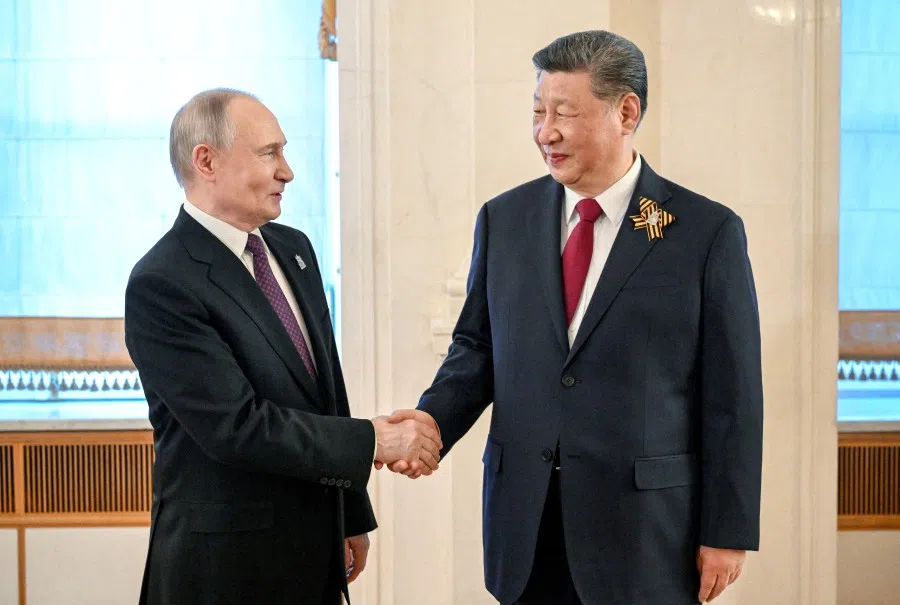The Washington summit on Ukraine: A performance of peace?
Trump’s recent Ukraine summit created diplomatic channels and framed new ideas, but fell short on real progress. Without clear security guarantees, enforceable terms and strong sanctions, the meeting risks being more show than substance — leaving Russia unchecked, Ukraine vulnerable and China leveraging the conflict for strategic gain. Negotiations expert Aurélien Colson explains.

Here is the uncomfortable truth about the recent Ukraine meeting in Washington: it produced more theatre than architecture. On 18-19 August, Donald Trump hosted Volodymyr Zelenskyy and a team of European leaders at the White House, touting an “early step” towards ending Russia’s war.
The optics were purposeful — Oval Office photo-ops, talk of “NATO style” guarantees and hints of a direct Putin-Zelensky meeting soon. But there are still substantive gaps: no ceasefire, no agreed map and no enforceable security framework. What moved was the conversation; what did not move were the fundamentals that end wars.
Fragile gains and real constraints
Was there true progress? Some, but fragile. Three concrete threads emerged. First, channel creation: Trump publicly said he is arranging a direct meeting between Putin and Zelenskyy. This is diplomatically useful because structured leader-level talks are how you test bottom lines without endless intermediaries.
Second, concept-framing: NATO’s Mark Rutte and others floated “Article 5-like” guarantees for Ukraine while explicitly shelving membership for now — an evolution on the 2023-24 formula of open-ended “security commitments” that Kyiv found too vague.
Third, allied signalling: Europeans stood up alongside Zelenskyy and underscored that any settlement must actually deter future Russian aggression, not just freeze lines and invite a rematch. All three are real steps, even if they live mostly on paper today.
That “two-track” style (grand promise, shifting follow-through) is a familiar Trump pattern; it can generate movement but rarely structure. Peace requires the latter.
But the limitations of the Trump approach were on display at the very same table, starting with mixed messages. The White House trumpeted “breakthroughs”, in spite of a series of unresolved core issues: territory, who would police any peace, not to mention accountability for war crimes and crimes against humanity. That gap matters because credibility is leverage; overselling creates later political space for Moscow to claim Washington “failed”.
Then there is the question of pressure. A sustainable settlement will require costs for noncompliance and inducements for restraint. Contrary to the ultimatum he issued himself two weeks ago, Trump proved reluctant to tighten sanctions further or to pair negotiations with explicit penalties for renewed Russian escalation. Absent harder sticks, Moscow believes time favours its war economy and attritional strategy. In short: no pain, no deal.

Third, the land-for-peace undertone — hints that Kyiv should consider concessions in the Donbas — collides with Ukraine’s legal and political red lines. Why on earth would Kyiv hand over to the Kremlin Donbass territories that Putin repeatedly failed to conquer in the last three years? Zelenskyy pushed back, with the support of European leaders. Making maps the first order of business before security architecture is a sequencing error: borders drawn without deterrence built in are just invitations to the next invasion.
Trump’s maverick play
Finally, Trump’s own oscillation — one day leaning into a mediator role, the next stepping back and urging Zelenskyy and Putin to sort it out — or even sheer rambling, keeps allies guessing and gives Moscow space to manoeuvre. That “two-track” style (grand promise, shifting follow-through) is a familiar Trump pattern; it can generate movement but rarely structure. Peace requires the latter.
Has the triangular balance shifted? Marginally, and in contradictory ways.
The structural reality, however, is less rosy for the Kremlin: its war economy is creaking under labour and capacity constraints and sanction-evasion pipelines — many running through China — face growing scrutiny.
For Ukraine, Washington’s renewed centrality to the talks is both a lifeline and constraint. The promise of “Article 5-like” coverage, if it hardens into a real multilateral guarantee with defined triggers and force packages, could deter future Russian offensives even without NATO membership. But as of today, it remains an aspiration; Russia immediately rejected any Western troop presence and demanded a veto over postwar security aid — maximalist positions designed to pocket negotiations without conceding coercive power.
Kyiv’s response has been to keep raising the price of aggression (note the unveiling of a long-range “Flamingo” cruise missile) and to insist that guarantees be specified within days, not months. That urgency is warranted; ambiguity helps the stronger side.
Russia’s calculus, America’s pivot, Europe’s gap
For Russia, the meeting reinforced a familiar calculus: keep talking to dilute sanctions momentum, keep fighting to improve the battlefield map and keep testing whether US politics will deliver concessions the battlefield cannot.
Moscow’s public stance — no NATO, no Europeans, effective veto rights — signals that it still believes Western unity can be split, especially if Trump gets bored. The structural reality, however, is less rosy for the Kremlin: its war economy is creaking under labour and capacity constraints and sanction-evasion pipelines — many running through China — face growing scrutiny. Time cuts both ways.

For the US, the week cemented a pivot from “arms-first, talks-later” toward “talks first with conditional assurances”. That can be smart if it couples diplomacy to coercive leverage and allied follow-through. But it can be dangerous if it substitutes showy summitry for the unglamorous work of building an enforcement regime. The balance has not fundamentally shifted; it has become more clear: Washington is back in the chair, but not yet holding the gavel.
As to the European leaders, they showed a strong level of unity and determination to stand by Ukraine. This, however, is not enough to close the gap in terms of capability. Even though the EU member states and the UK have provided way more financial support to Ukraine than the rest of the world combined, they still need to ramp up military production.
The China factor
How does all this play with China?
In Europe, it becomes every day more apparent that drones and missiles killing civilians in Ukraine are assembled in Russia, thanks to dual-use components imported from China. That reality makes Beijing a stakeholder in prolonged conflict, rather than rapid settlement.
Beijing’s official line since the Washington meetings has been classic “constructive neutrality”. The foreign ministry welcomed US–Russia dialogue and said it supports “all efforts” toward peace. State-adjacent media have floated the idea that China could even play a guarantor role — an idea Kyiv publicly rejected today, citing China’s material support for Russia.
In practice, China remains indispensable to Russia’s wartime resilience: through trade, dual-use components and sanctions workarounds. In Europe, it becomes every day more apparent that drones and missiles killing civilians in Ukraine are assembled in Russia, thanks to dual-use components imported from China. That reality makes Beijing a stakeholder in prolonged conflict, rather than rapid settlement.

Washington knows this, which is why Congress is advancing new tools to penalise Chinese entities aiding Russia’s war machine and why the sanctions debate sits in the shadow of the peace track. If Trump’s team pursues a settlement that relaxes pressure on Moscow without constraining Chinese backfill, expect bipartisan pushback that bleeds into the broader US-China competition — from export controls to outbound investment screening. Conversely, if the White House couples negotiations with tighter enforcement against Chinese facilitators, it will sharpen US-China friction in the short term but raise the odds that Moscow treats the talks as more than a time-buy.
For Beijing, the calculus is straightforward: a distracted America is useful, a defeated Russia is probably not, and a formal Western guarantee for Ukraine that leaves NATO’s door closed would be an acceptable precedent to cite around Taiwan — “security assurances” without alliance expansion. That is also why any Ukraine guarantee must be real: defined triggers, standing forces and pre-positioned logistics. Anything less invites not only Russian testing in Europe but also Chinese probing in Asia.
Missing pieces
So, did Washington make headway? The answer is “yes, but” — and the “but” is doing the heavy lifting. The meeting created channels and framed options; it did not create facts.
The Trump approach can still produce an outcome if it sheds the performative excess and adds three missing pieces: (1) hard conditionality on sanctions relief tied to verifiable Russian steps; (2) a written, multilateral security instrument with explicit timelines, triggers, and a European forward presence; and (3) unified messaging from the top that praises the necessity to build international stability on international law and the principle of sovereignty.
Otherwise, the process risks becoming a corridor where Russia waits, Ukraine bleeds, Europe frets — and China watches, helps and learns.





